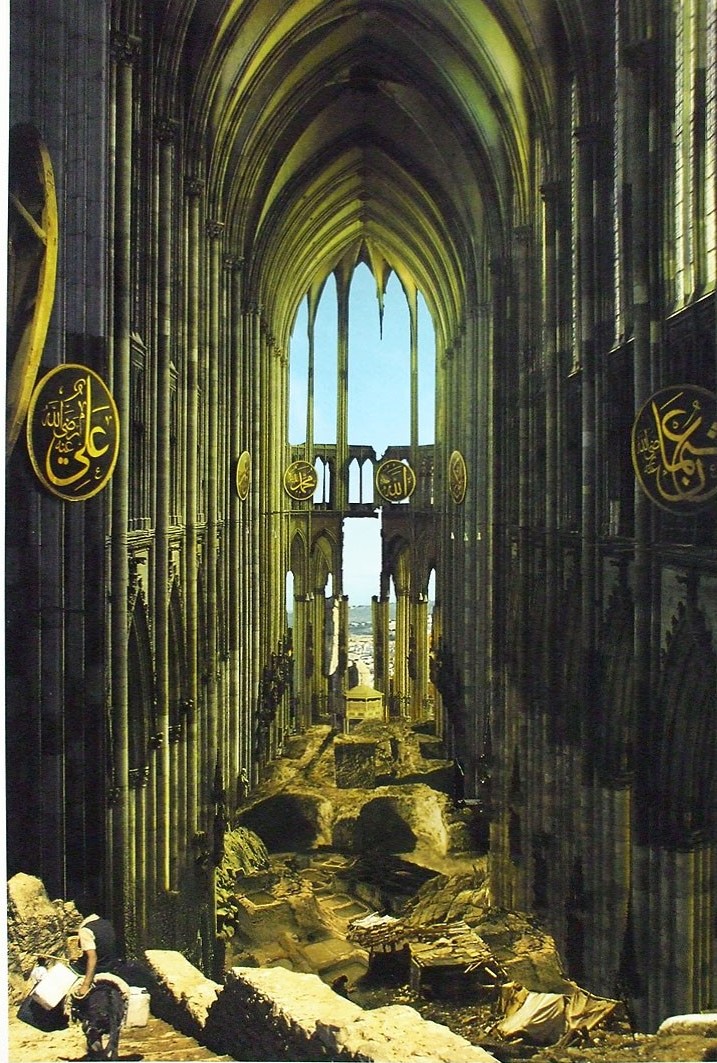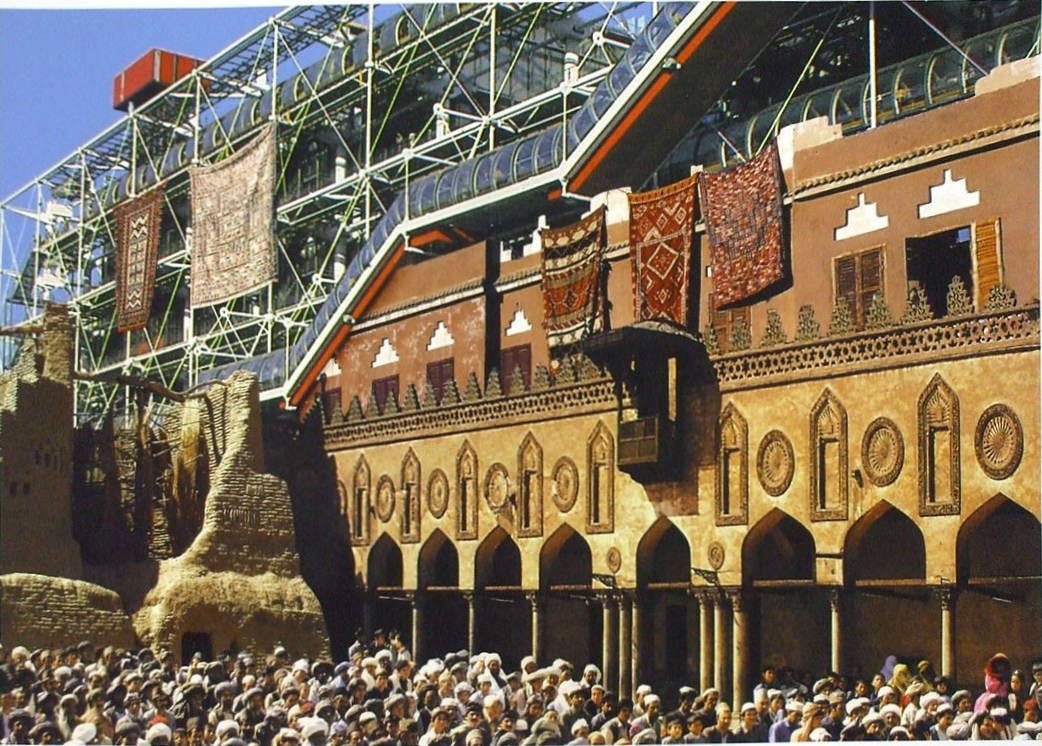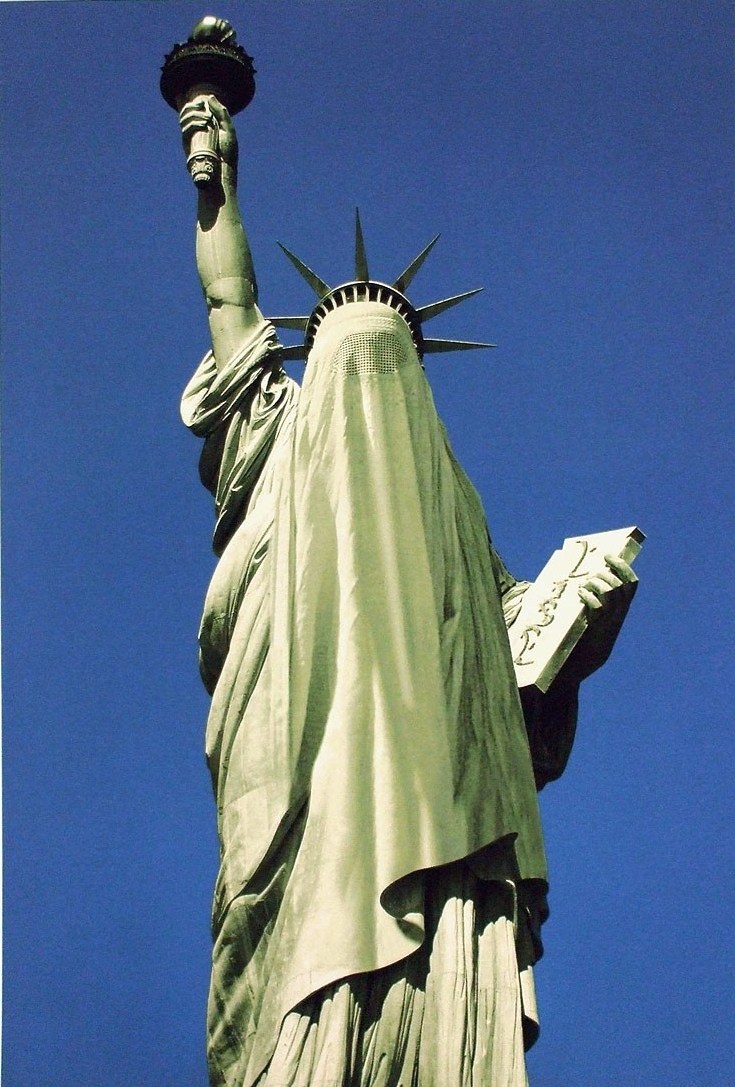This week, we reintroduce the Russian artist-collective, and their series’ of work made in collaboration with Eyestorm, Islamic Project, which depicts Western and Eastern culture combined. Released at the start of the millennium, the series highlights society’s views and fears of the religion of Islam, taking inspiration from rituals and stereotypes of contemporary society; “classic compositions and religious iconography we use like symbols, very often with a hint of irony” - AES+F.

AES PLUS F
Cologne Cathedral, 2000
35(w) x 45(h) cm
13.98(w) x 17.91(h) inches

AES PLUS F
Cologne Cathedral, 2000
35(w) x 45(h) cm
13.98(w) x 17.91(h) inches
|
|
|
35(w) x 45(h) cm
13.98(w) x 17.91(h) inches
|
Iris print
Published by Eyestorm
Edition of 300
|
|
Formed with the first letter of each artist's surname, Tatiana Arzamasova, Lev Evzovich, and Evgeny Svyatsky came together to form a conceptual art collective, which after the arrival of Vladimir Fridkes in 1995 became
AES+F. From early childhood, each member of the group had an interest and tendency towards visual art but only since the years of global change, which came about with the dissolution of the USSR, did they become interested in expressing a revolutionary aesthetic. For them, photography became one of the ways through which they could do this - not in its traditional documentary quality, but as a method for creating fabricated scenes that would ignite discussion and fuel debate on the frictions within society.

AES PLUS F
Paris, Beaubourg, 2000
45(w) x 30(h) cm
17.91(w) x 12.01(h) inches

AES PLUS F
Paris, Beaubourg, 2000
45(w) x 30(h) cm
17.91(w) x 12.01(h) inches
|
|
|
45(w) x 30(h) cm
17.91(w) x 12.01(h) inches
|
Iris print
Published by Eyestorm
Edition of 300
|
|
Islamic Project began as a performance and public intervention, which then turned into a photographic series. AES+F were interested in imagining and presenting a future in which the influence of Islam was superimposed upon all of Western culture, in the form of architectural and cultural transformations. In this group of digital collages, well-known landmarks and tourist destinations have been drastically altered to look as if taken over by a radical form of Islamic culture. In one work,
St. Peter’s Rome, the artists have filled the forecourt to the basilica and seat of the Catholic Church in Rome, with a scene not unlike the bustling market places of Marrakech. In another,
Cologne Cathedral ’s nave is in ruin whilst its walls uphold medallions just like those adorning the interior of Istanbul’s imperial mosque and museum, Hagia Sophia. According to AES+F, these juxtapositions served as kind of ‘social psychoanalysis’ - a visualization of concerns of Western society about Islam.
Work such as
Statue of Liberty where lady Liberty is wearing a Burka and holding the Quran, were not only hugely inflammatory, but also strangely prophetic as a precursor to 9/11 attack in the United States. As conceptual work prior to the attack, the reality of the event catapulted the series to prominence as it simultaneously gained in controversy. Existing stereotypes became enforced and some of the images were abused to propagate theories that AES+F itself was discriminatory towards Islam. The images in fact deliberately exaggerated stereotypical motifs of freedom and oppression, as a strategy to create a visual ‘worst case scenario’ of exactly those ideas. In turn they successfully demonstrated the absurdity of such stereotypes as well as, fatefully, confirming their prevalence.

AES PLUS F
Statue Of Liberty, 2000
30(w) x 45(h) cm
12.01(w) x 17.91(h) inches

AES PLUS F
Statue Of Liberty, 2000
30(w) x 45(h) cm
12.01(w) x 17.91(h) inches
|
|
|
30(w) x 45(h) cm
12.01(w) x 17.91(h) inches
|
Iris print
Published by Eyestorm
Edition of 300
|
|
By plumbing the depths of popular culture, identifying how to relate and not being afraid of challenging expression, AES+F’s grand visual narratives explore the values, vices and conflicts of contemporary society in the global sphere. The strength of
AES+F’s work lies in its ability to fuse cultural extremes in a stimulating and powerful way. When asked about the desired impact of their work, the group commented;
“we’d like to destroy the cliché about the good guys and the bad guys as portrayed in the media. With art, we’re attempting to describe the new situation in which complete ambiguity rules” . As a result, AES+F’s imagery could not be more indicative of the time we live in, or more representative of the political impact an image can possess.
AES+F have exhibited at numerous international festivals, including the biennales of Venice, Moscow, Istanbul and Seoul. Their works appear in some of the world's most important collections.
The six print editions from 2000 can be found on the
AES+F’s artist page
here.